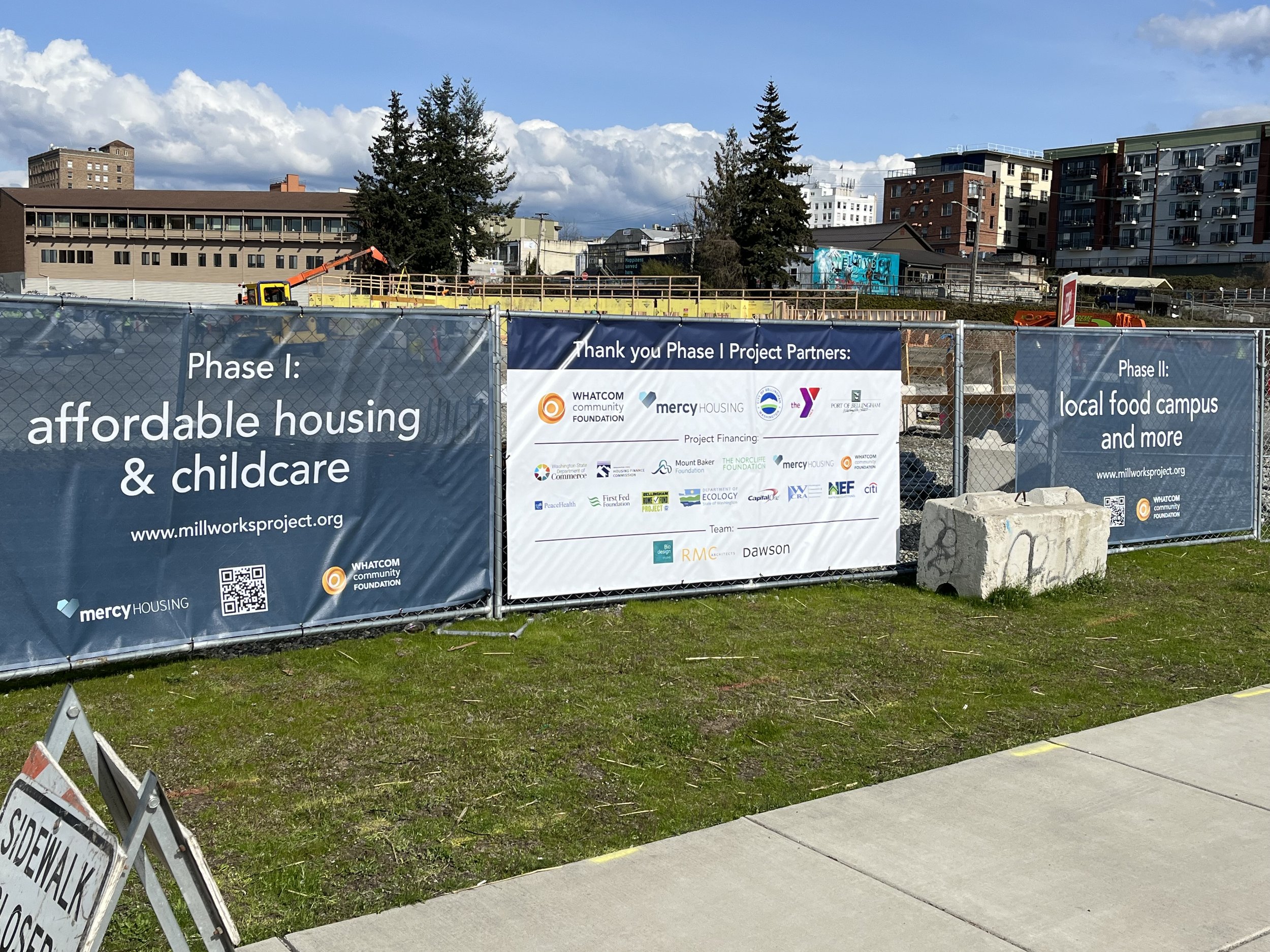May 7-13 is Affordable Housing Week, championed by the Housing Development Consortium to highlight the role affordable housing plays in stabilizing our communities. See a recent affordable housing story below and more of Aspect’s Affordable Housing work here.
Staff from Aspect’s Bellingham and Seattle offices were on hand for the ceremonial groundbreaking of the first phase of the Millworks development, which will bring affordable housing to the Bellingham waterfront.
Banners at the construction site announcing both Phases of the Millworks redevelopment
Millworks is a partnership between the Port of Bellingham, Whatcom Community Foundation, and Mercy Housing Northwest (Mercy). Phase 1 of Mercy’s development includes 83 units of workforce and family rental housing plus a YMCA early learning center. The development should be ready to welcome residents next year.
Mercy Housing Northwest’s project manager Ellen Lohe (left) emceed the groundbreaking event, and Port Commissioner Michael Shepard (right) delivered remarks.
The Millworks development sits on 2.3 acres at the corner of the larger 67-acre Georgia-Pacific West cleanup site. Once home to a pulp and tissue mill, the site has undergone massive cleanup and redevelopment over the last decade, including the City of Bellingham’s popular Waypoint Park. Aspect’s environmental, geotechnical, and stormwater teams have worked extensively within the former mill’s footprint.
The building’s foundation is in place with framing starting, only 4 months after cleanup completion. Photo courtesy of Mercy Housing NW.
For the Millworks project, Aspect completed a pre-design investigation, developed a cleanup action plan, oversaw a formal public comment period, authored the engineering design report, executed an excavation compliance monitoring plan, reviewed construction plans/specs, and provided bid support. We provided oversight on the soil removal project, which also accomplished the substantial grading and site prep needed to start work on the new building. All of this occurred within a highly expedited 12-month schedule to meet Mercy’s funding requirements.
Principal Hydrogeologist Steve Germiat, who attended the groundbreaking ceremony, managed Aspect’s project team, which includes Adam Griffin, Jane Gregg, Matt Eddy, Nikolai Carroll, and Baxter Call. They worked in close coordination with the Port, RMC Architects, and the rest of the Mercy team, as well as the Washington State Department of Ecology, to reach this key milestone.
Whatcom Community Foundation’s planned Phase 2 development will include more affordable housing units and a local food campus featuring a commercial kitchen for use by food trucks and nonprofits like Meals on Wheels. Phase 2 construction is expected to begin in 2025.


















